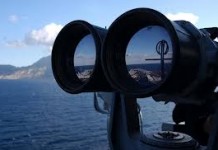he humanities are in crisis again, or still. But there is one big exception: digital humanities, which is a growth industry. In 2009, the nascent field was the talk of the Modern Language Association (MLA) convention: “among all the contending subfields,” a reporter wrote about that year’s gathering, “the digital humanities seem like the first ‘next big thing’ in a long time.” Even earlier, the National Endowment for the Humanities created its Office of Digital Humanities to help fund projects. And digital humanities continues to go from strength to strength, thanks in part to the Mellon Foundation, which has seeded programs at a number of universities with large grants—most recently, $1 million to the University of Rochester to create a graduate fellowship.
Despite all this enthusiasm, the question of what the digital humanities is has yet to be given a satisfactory answer. Indeed, no one asks it more often than the digital humanists themselves. The recent proliferation of books on the subject—from sourcebooks and anthologies to critical manifestos—is a sign of a field suffering an identity crisis, trying to determine what, if anything, unites the disparate activities carried on under its banner. “Nowadays,” writes Stephen Ramsay in Defining Digital Humanities, “the term can mean anything from media studies to electronic art, from data mining to edutech, from scholarly editing to anarchic blogging, while inviting code junkies, digital artists, standards wonks, transhumanists, game theorists, free culture advocates, archivists, librarians, and edupunks under its capacious canvas.”
Within this range of approaches, we can distinguish a minimalist and a maximalist understanding of digital humanities. On the one hand, it can be simply the application of computer technology to traditional scholarly functions, such as the editing of texts. An exemplary project of this kind is the Rossetti Archive created by Jerome McGann, an online repository of texts and images related to the career of Dante Gabriel Rossetti: this is essentially an open-ended, universally accessible scholarly edition. To others, however, digital humanities represents a paradigm shift in the way we think about culture itself, spurring a change not just in the medium of humanistic work but also in its very substance. Continue reading “Digital humanities”

